Back in 1983, the Radio Times and BBC2 held a ‘Photo-Assignment‘ competition for the BBC2 National Photographic Week Competition, and although I didn’t like the idea of having to send off my film along with the two 10×8″ prints I decided to enter a set of pictures taken in Hull. I loaded a roll of FP4, 36 exposures loaded from bulk into a camera body and set out on a Sunday morning in early August for a trip around the city taking pictures for the competition on that body as well as some just for myself on a second camera.
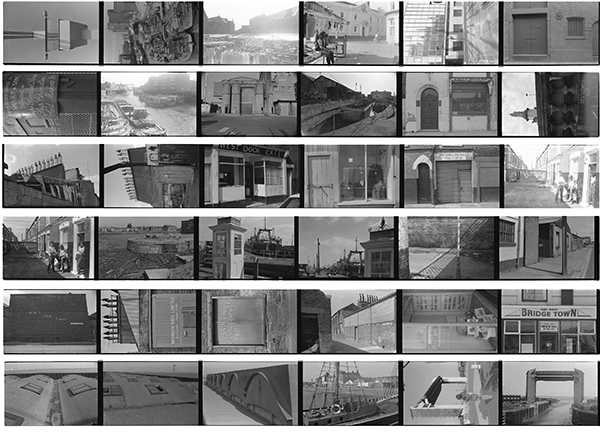
Back home later in the week I developed the film, selected my two pictures and sent them off to New Broadcasting House in Manchester on 22.8.83. I was reminded of this today when I read the label on the back of an old print with my entry form stuck to it. It wasn’t the picture they chose, but the other I sent in was selected and they made two 12x9s and a 16×12 of it for showing on BBC2 and the touring exhibition. Not owning A TV (I still don’t, seeing enough in life and not having the time to watch it secondhand), I got my college to record the programme so I could see my picture on it for a few seconds.
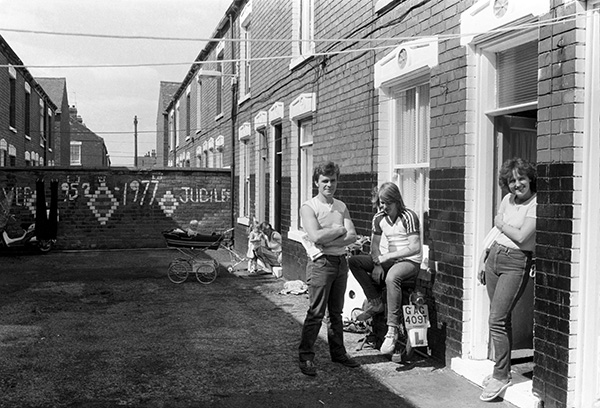
But it was the picture rather than the reverse of the print that caught my attention, and I realised it was an image I hadn’t seen since 1983 and had forgotten about completely. And it wasn’t a bad picture and would certainly have been included in my Hull book had I had it to hand. So I looked for it in my file containing the contact sheets from Hull, searching for it at some length, but it was nowhere to be found.
The BBC had of course returned my negatives in the stamped addressed envelope I had included, and they came back in October or November and were filed with the work I was taking then – but somehow I forgot to make a contact sheet, which made the negatives were very difficult to find. Finally I did find them, and made the digital contact sheet above, rather too small to be seen properly in the small version on this post, but good to see at full size on my screen.
Looking at the set of 36 pictures, it’s obvious that I had decided to go an visit some of the favourite locations I’d photographed earlier and retake versions of images I’d taken before. This isn’t generally a very good idea, as if you have made a good picture before you are likely to get something that doesn’t match up to it when you return.
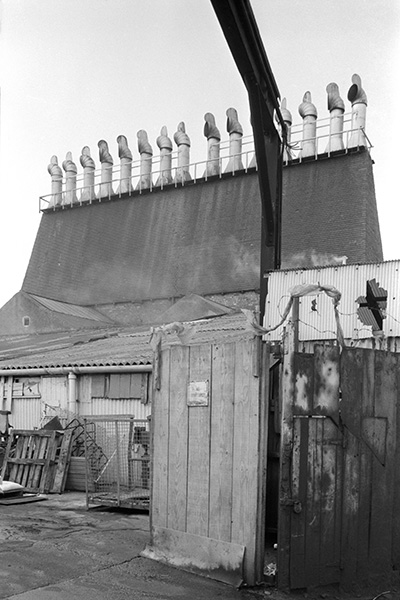
Though mostly I seem to have tried hard to make pictures that were just a little different, and in some parked cars or other obstructions made a repeat performance impossible. If you have are following my daily posts on Hull Photos for the UK City of Culture 2017, then today’s image showed the shadows of the chimneys of a Fish Smoke House, perhaps even the one in the image above, though there were several others in the area, all now gone – a piece of heritage lost.
The other of the two I printed for the BBC – which was the one they selected I also took on the other camera I was carrying – and I think did it rather better, and in time two better images will appear on Hull Photos – and I’m unlikely to post it myself (its the fourth frame from the left on the fifth row down.)
But the image I’d found this morning I’d only taken on the film for the BBC and it’s only one in the 36 where I made two exposures, presumably because I realised I had over-exposed the first. The two are almost identical so far as the three people in the foreground are concerned ,though the over-exposed frame is just a little better framed and has the woman and child in the background in a different position. It would have been hard to get a decent print from the negative in the darkroom, but I may be able to rescue it digitally.
The pictures were taken using an Olympus OM-1 camera, and the FP4 was processed in Acutol. There are two slightly darker bands across every frame, only noticeable in even areas such as sky. I’m unsure whether these represent a film fault or uneven processing, but at least with digital these can be treated, and they are almost entirely invisible after a little work in Photoshop.
Faulty film was not that unusual, particularly in bulk film, and I had some batches replaced by Ilford over the years, though they ever admitted the faults. Now I might be able to reclaim some of those faulty negs by digital retouching if I have time and patience.
I had found the print when I went up into the dark recesses of the loft in my house, looking for more of the actual prints I showed in Hull back in 1983. I didn’t have a great deal of luck with these, only coming across a handful to add to those I’d already found. Perhaps I had sold a few, and others might have got lost or still be hiding in a cupboard or lost after taking them to talks or shows.
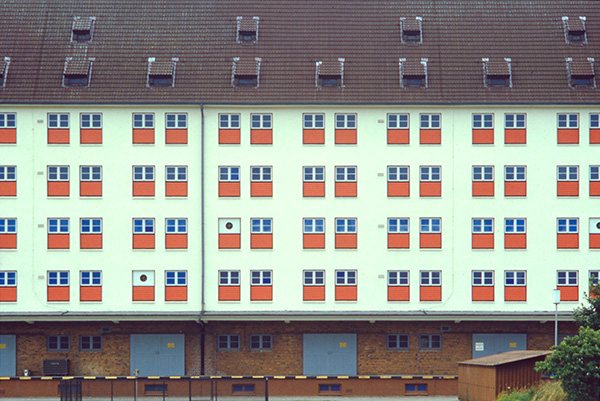
But as well as the print which led to my rediscovery of that BBC competition film, I also found a slide filing sheet with 14 sides from Germany in the early 1980s, including an image I’d spent several days searching the house for when I was producing the book ‘German Indications‘ and had to leave out, and a couple of others that might have been included had these slides, obviously selected to send to a gallery at some point along with some black and white prints been available.
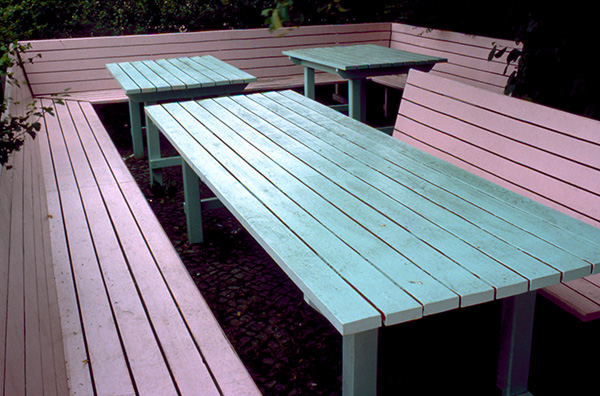
A couple of others are probably the originals of images which I reproduced from duplicate slides, although most of the duplicates, made using an Illumitrans slide duplicator, were of exceptionally high quality. The only way I can identify the originals is if they are in the original Agfa slide mounts, but some of them I will have taken out of these for various reasons, especially if I wanted to reproduce the full image, a small part of which is hidden by the slide mount.
The image above is in the book (and the preview on line) but with a different colour balance to the new scan. I’m not sure which is more accurate, but the book image, considerably more yellow, is closer to the slide, though my memory prefers the bluer version above, though perhaps it is just a touch too blue…
Which reminded me of a post on The Online Photographer a couple of days ago, on Color Correction (which I’d spell as Colour Correction) which is worth reading, including some of the comments. And you are welcome to download the above image as one to practice on though of course despite the lack of a watermark it is still copyright.
Slide films always added their own personality to the colour pictures we took, and we have now rather got used to the more accurate rendition of digital, though digital cameras too have their own differences. I generally prefer the results from my Nikons to those from the Fuji cameras I less often use, but others rave in admiration of the Fuji colours, especially in jpegs. I just adjust their RAW files to give something that seems more like I see.
______________________________________________________
There are no adverts on this site and it receives no sponsorship, and I like to keep it that way. But it does take a considerable amount of my time and thought, and if you enjoy reading it, a small donation – perhaps the cost of a beer – would be appreciated.
My London Diary : Buildings of London : River Lea/Lee Valley : London’s Industrial Heritage
All photographs on this and my other sites, unless otherwise stated, are taken by and copyright of Peter Marshall, and are available for reproduction or can be bought as prints.
To order prints or reproduce images
________________________________________________________